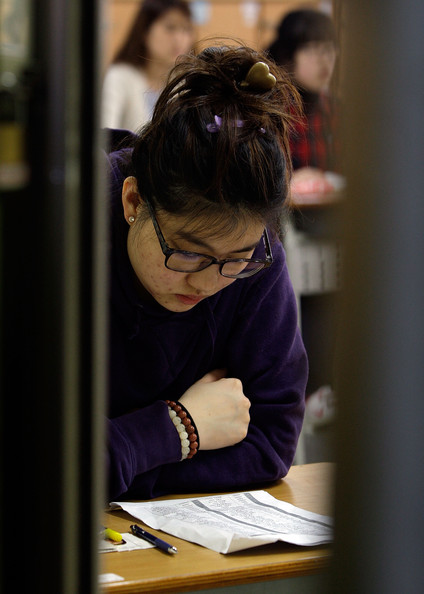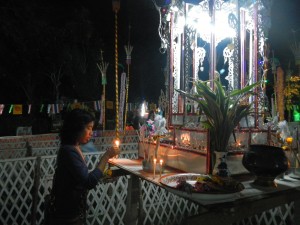A Korean Hagwon, in my experience, is a private English school for Korean students. My Hagwon, which I’ll refrain from naming, runs as an English pre-school and kindergarten in the morning where three to six year old students had English lessons from 9am to 3pm.
I spent the earlier part of this year teaching at a Hagwon. As a Fil-Am stepping into this radically different culture, I was eager to learn and be inspired from this new career path. I can honestly say I learned and was very inspired, but not at all in the frame I was expecting. I left after only four months.
Have you heard of the Asian Hierarchy? It was explained to me as a sort of racist Asian caste system where light-skinned Asians from growing Asian economies were ranked amongst the top and darker-skinned Asians were at the bottom. It was discussed in passing when I was in college among other Asian-Americans, and I laughed off. I sort of forgot about it until I landed in Korea and was confronted with it on my first day of school.
The night before, I was greeted by other foreign teachers who worked at the school. They were from all parts of the United States, as well as Canada. After helping me into my hotel room, one of them bluntly said to me:
“You don’t look like Jessica Alba.”
Confused, I responded:
“Yeah, Sorry….What?”
“The supervisors at the school said you look just like Jessica Alba.”
“Oh… yeah. I don’t look like Jessica Alba.”
“It’s funny how the supervisors view Caucasian faces. They didn’t even mention you were Asian.”
The next day my appearance was again addressed by a Filipina from Southern California. She pulled me aside and asked me:
”What are you?”
I am no stranger to this question so I knew exactly what she was talking about. I went to my auto-generated response of “I’m half-Filipino, part Mexican and White.”
“Yeah, I thought so. We have another Filipino at the school!”
She excitedly high-fived me. I smiled at having found an ally on my first day of school, until she added:
“Don’t tell the school, the parents don’t necessarily want Filipino teachers.”
She went on to explain to me that Filipinos in South Korea were ranked lower socially. Because of poverty and the cost of education in the Philippines, many Filipino immigrants in Korea turned to one of two professions: child care (nannying) or prostitution. Because of this, Filipino women were seen as second-class and unfit to teach the uber-rich students at my Hagwon. I immediately recalled the concept of Asian Hierarchy, but was horrified at seeing it in action. For fear of getting fired and just wanting them to like me, I kept my ethnicity under wraps. I knew this was not a safe space for me when one of my fellow white teachers from the United States threatened to tell my student’s parents that I was Filipino in order to get me fired. Korea was a hotbed for competitiveness and sometimes came out in really ugly ways. A week later, I booked my plane ticket back to California.
Culture vs. Identity
After leaving Korea, I’ve had time to reflect on this experience and while other things contributed to my leaving early, I couldn’t let this rest. My small taste at discrimination had me running home to my mommy. To me, it wasn’t worth it to risk my self-worth, sanity and pride by subjecting myself to a constant fear of being fired. It also wasn’t worth it to hide my family, heritage and in essence who I am. This was not my first encounter with a bully who chose my ethnicity as his or her weapon. But it was the first time that this bully had society on her side. A couple months later, I’ve been able to reflect and break down how this system of racial oppression still exists in South Korea, and Asia as a whole.
It’s easy to walk away from a bad experience in a foreign country and blame it on the culture for their backward uncivilized people and just embrace a Go America! Rah! Rah! Rah! attitude. Not only is that lazy, but it’s largely incorrect and leaves room for bigotry. It has been used to rationalize imperialism and genocide in all parts of the world. So like a good liberal arts graduate, I put my experience in a global and historical perspective.
Korea in Historical Context
In the 1950s, The United States was engaged in the Cold War. We hear a lot about how this impacted the people at home, but the only images from abroad are of children in crossfire with their clothes burning off. This did contribute to the unsuccessful wars in Vietnam and Korea, but what’s rarely depicted are the lasting effects of the war today.
After leaving Korea divided into two countries, the United States declared the war a win, but not without setting up various military bases in around in South Korea. The U.S military presence is still very prevalent in Seoul, with the United States Army Garrison Yongsan military base located in Itaewon, which is at the heart of the city. Not far up the road, you’ll see Hooker Hill with large window displays of Filipino and Korean women. Not long after U.S wartime presence in Seoul, you began seeing a widespread adaptation of Western culture. Adaptation and idolization to the point where today, Korean men and women alike get eye reconstruction, nose jobs, and skin bleaching to appear more white.
As the Korean economy sought to reconstruct, they searched for models for their education system, for they embody the fact that a good education leads to higher economic productivity and advancement. This is when the United States had already begun putting more pressure on scholastic aptitude tests and initially studies showed that they were a good motivation for growth (today that is not the case.) This influenced Koreas education model greatly, which resulted in increased school day length, more lessons, and a huge push for English aptitude financed by the Korean government. As a result, there was an increase in U.S presence in the form of U.S teachers and recent college grads -- they seek to obtain that magical living abroad experience, but with little background in education or Korean culture, and I was one of them.
As a result, the idealized American face is what has been sought after and thus gave birth to the Asian Hierarchy. Filipinos rank low on this because of our naturally dark skin, lack of a pointy nose, and seeming low economic rank. Capitalist and Western cultures have created a belief that appearance indicates status, therefore, appearing more wealthy or more white, in this sense, makes you more valuable. And in order to be more valuable, one has to be less valuable than you. This value system has created a hyper-competitive race to what Korean culture sees as perfection, therefore explaining why plastic surgery is quite common, as well as stress-related suicides. We see this trend occurring in other developed Asian countries as well, such as Singapore, Taiwan and Japan.
No, it is not right that I had to hide my identity in order to keep a job, nor that I was chased away because my ancestors are brown. However, I am glad that I had the privilege and agency to leave. My experience is only the tip of the iceberg; it is one of many, similar to those of other Filipinos living in South Korea. It isn’t just an isolated occurrence in another part of the world, but rather, a construct that has inadvertently been created and adapted from U.S. culture. It is an occurrence that I hope other Fil-Ams and Pilipinos can learn from.
Photo credit: Zimbo



